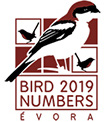Registrations & Submissions
Registrations and submissions are now open.
Please check instructions below.
Registration fees
The registration fee (standard and reduced) covers:
- Conference materials
- Abstract volume
- Coffee breaks
- Lunches
- Mid-conference excursion
- Cultural event
- Social dinner
| Standard | Students | |
| Early bird | 280€ | 220€ |
| Late | 360€ | 310€ |
| Low Income countries | 160€ | |
| 1 Day registration | 100€ | |
Low income countries
We have clustered the categories low income, lower middle income and upper middle income from the World Bank list of economies (June 2018).
The reduced registration fee is applied for participants coming from countries with relatively lower income, such as Albania, Armenia, Azerbaijan, Belarus, Bosnia and Herzegovina, Bulgaria, Georgia, Kazakhstan, Kosovo, Kyrgyz Republic, Macedonia FYR, Moldova, Montenegro, Romania, Russian Federation, Serbia, Tajikistan, Turkey, Turkmenistan, Ukraine and Turkmenistan.
Conference Countdown
Day(s)
:
Hour(s)
:
Minute(s)
:
Second(s)
DEADLINES
Registration period
Regular: 15 August 2018 – 31 December 2018
Late: 2 January 2019 – 28 February 2019
Submission period
Deadline for talks, speed talks & oral presentations:
25 October 2018
Deadline for posters:
31 January 2019
Instructions for registrations
- Sign up in https://sge.uevora.pt (you will receive a confirmation email to finish your sign up)
- After login in https://sge.uevora.pt go to https://sge.uevora.pt/eventos/ver/415
- On the right side of the page choose “Register”
- (Optional if you want to submit abstract) On the right side of the page choose “Submit Abstract”
- After registration choose “Confirm Registration”
- After you confirm your registration you will be given the amount payable according to the options you selected in the option “Confirm payment”.
Call for submissions
The scientific programme of the conference will consist of plenaries, oral contributions, posters and workshops. The main topics of the conference will be:
Atlases and studies of bird distributions
Biodiversity indicators
Surveys and monitoring of breeding birds
Waterbird monitoring
New methods and technologies
Changes in wintering areas: long-distance migrants and migratory connectivity
Causes of change in bird populations and societal responses
Climate change impacts
Renewable energies and their effects on birds
Effects of conservation actions and policies
Top Photo © Fer Goytre
